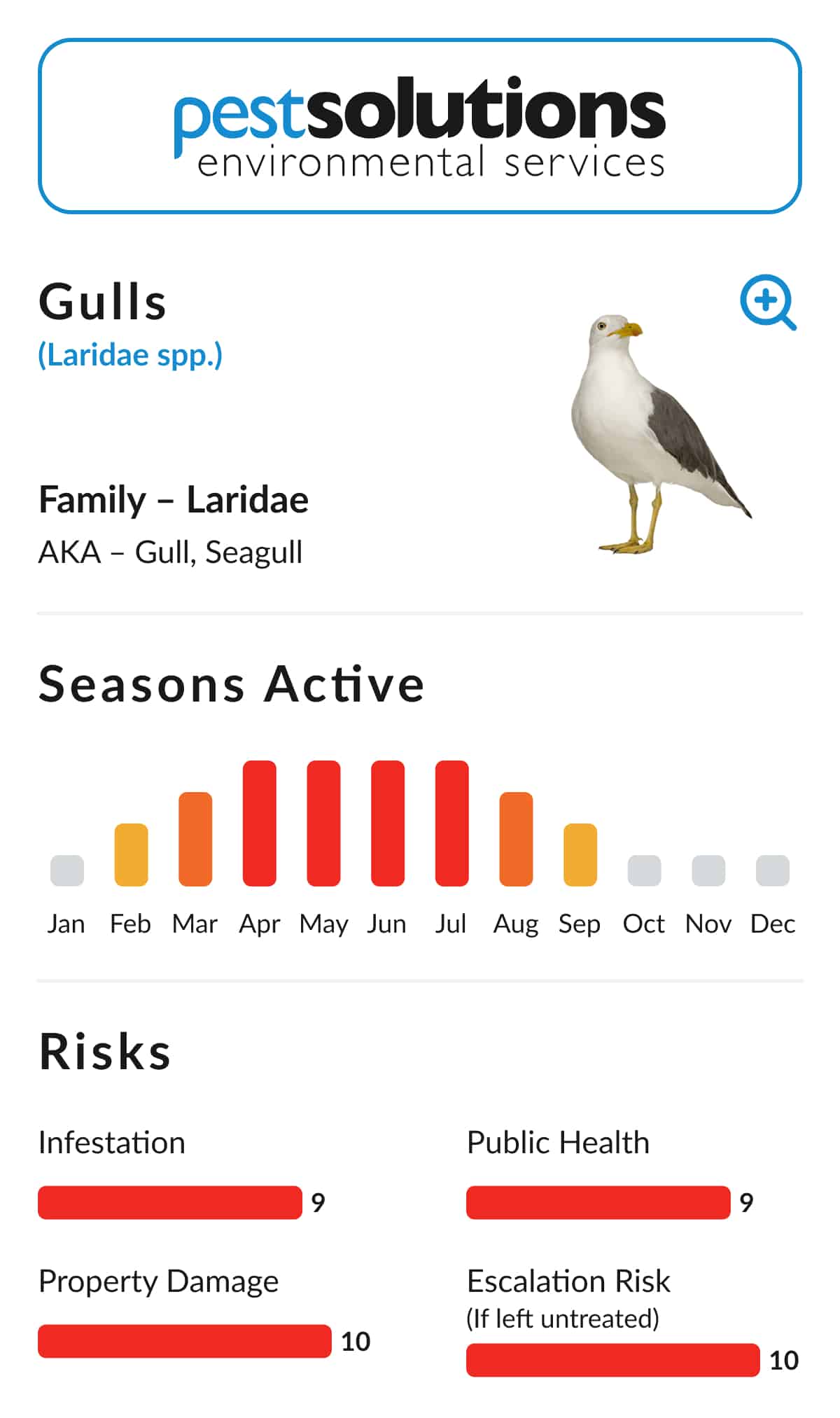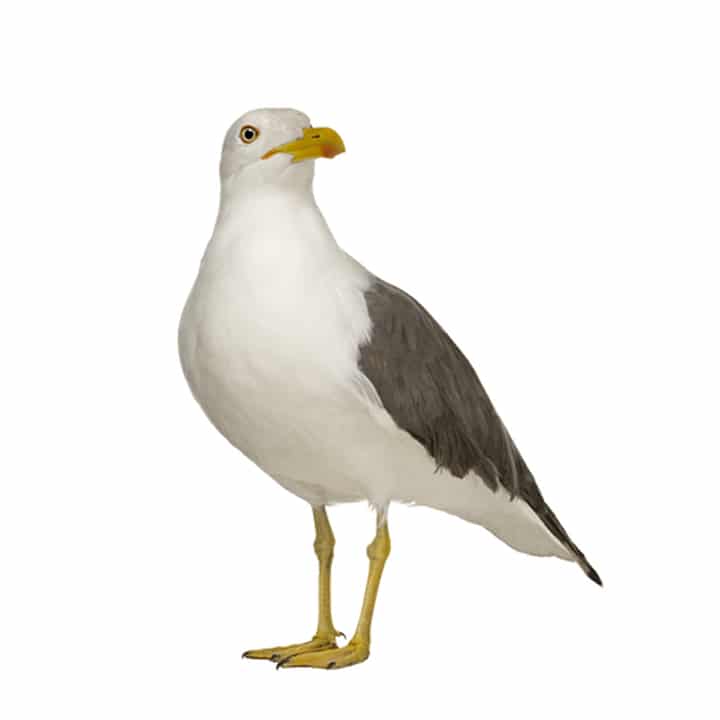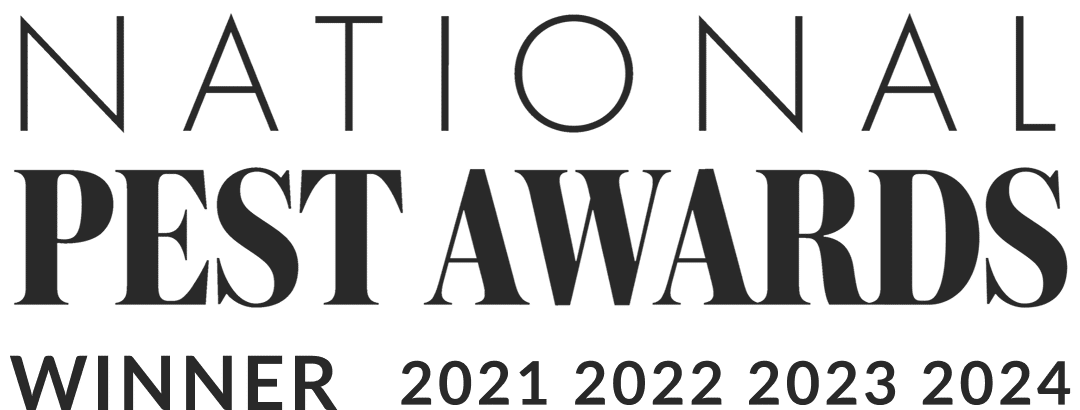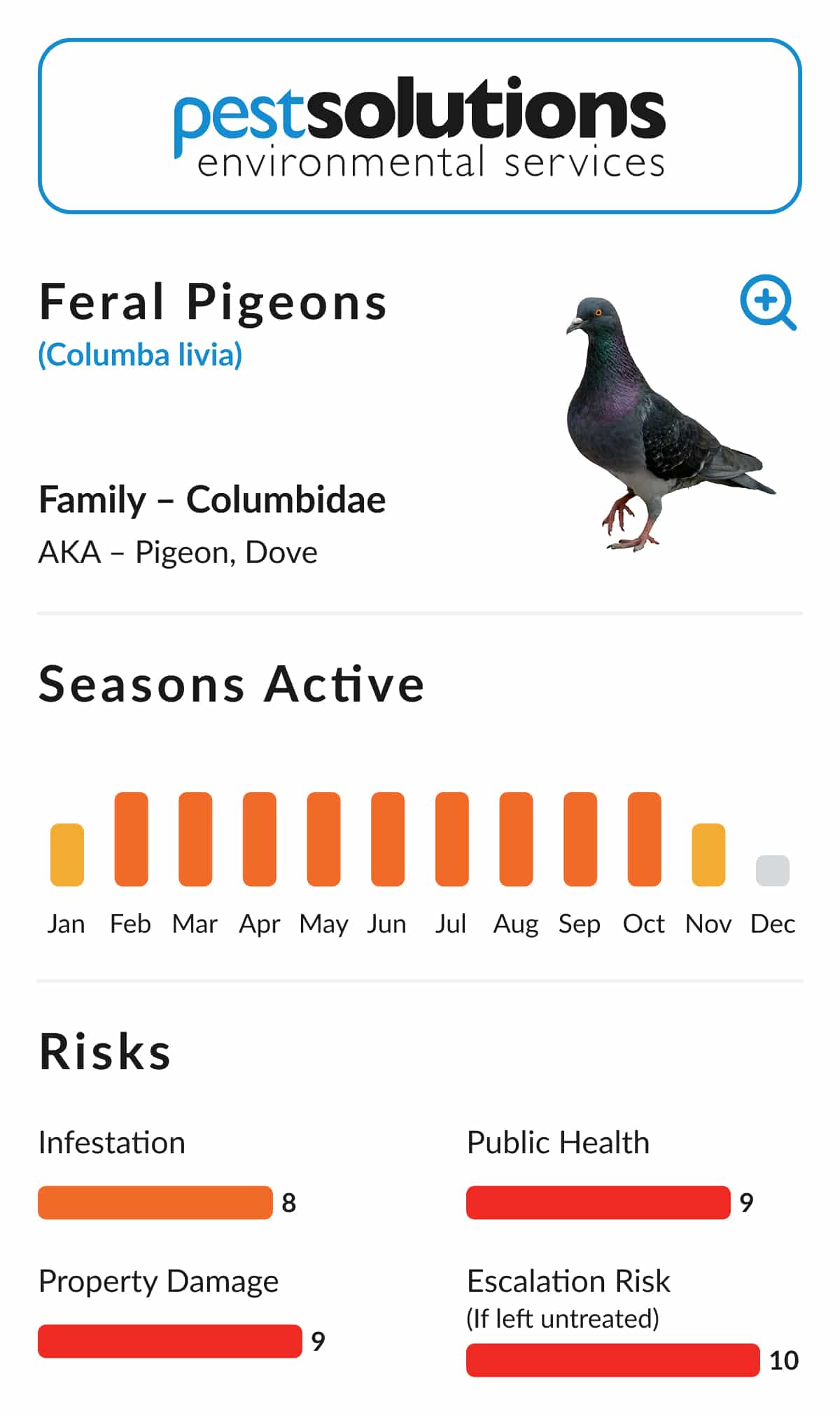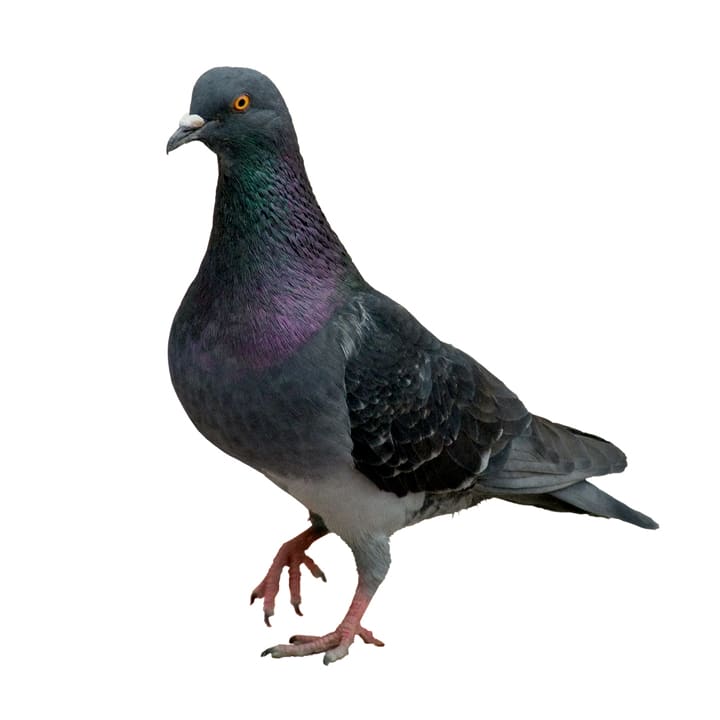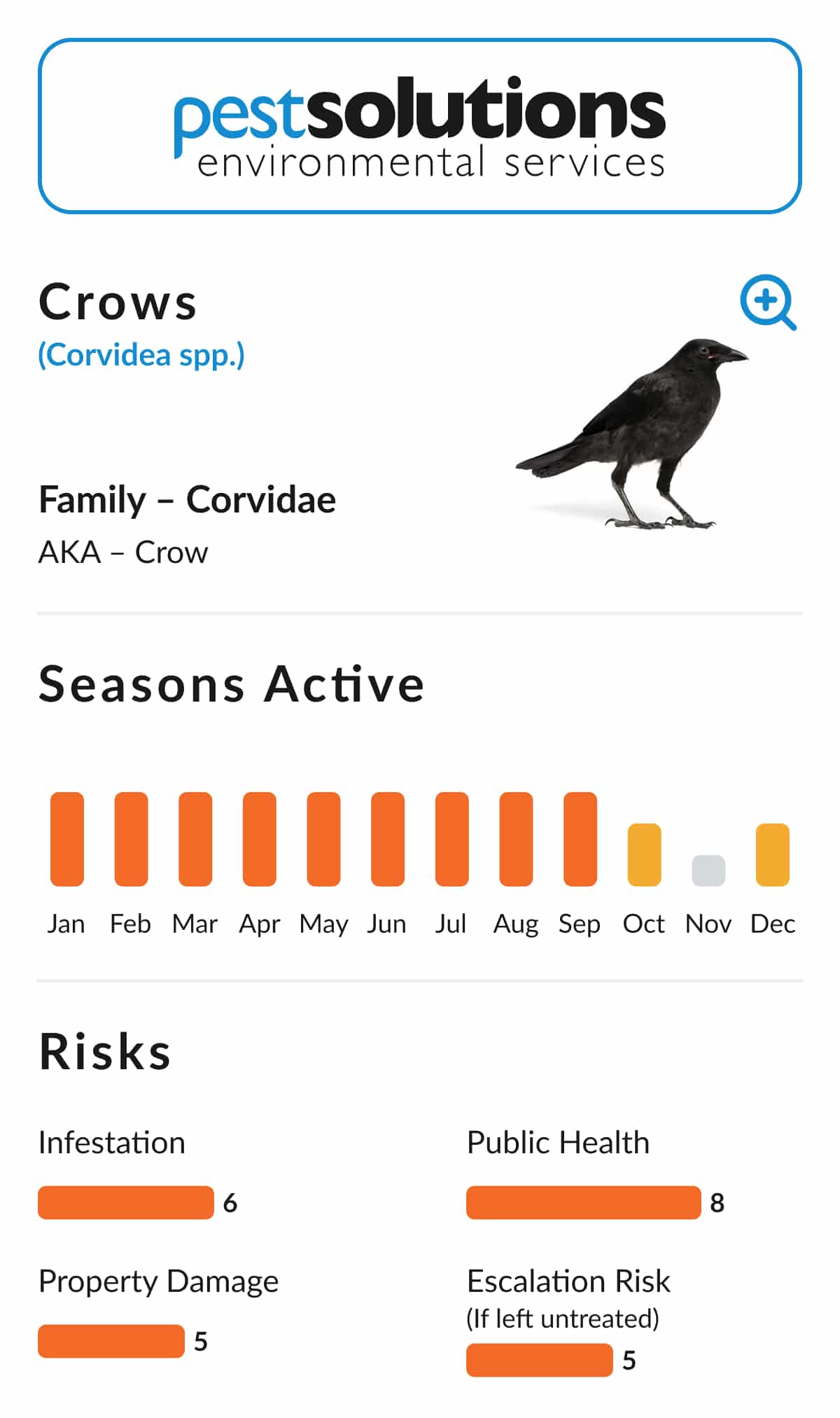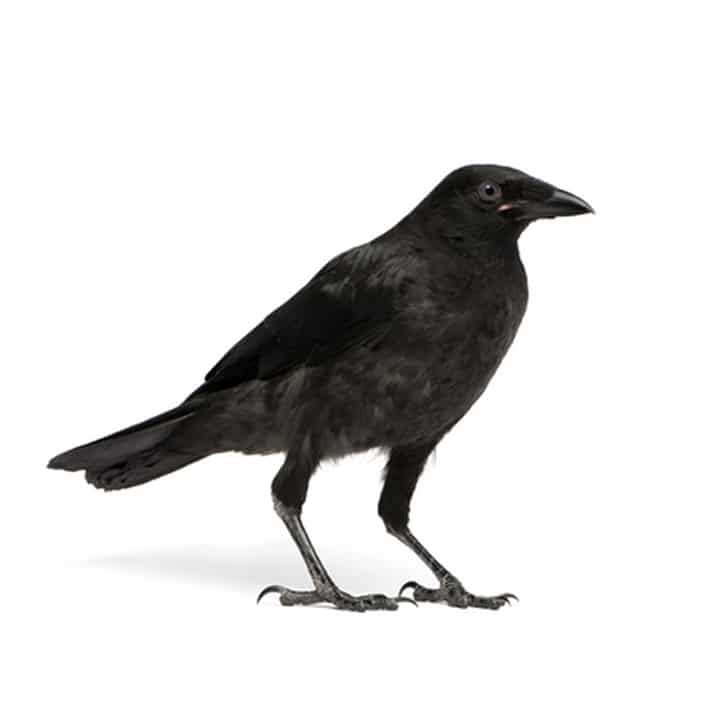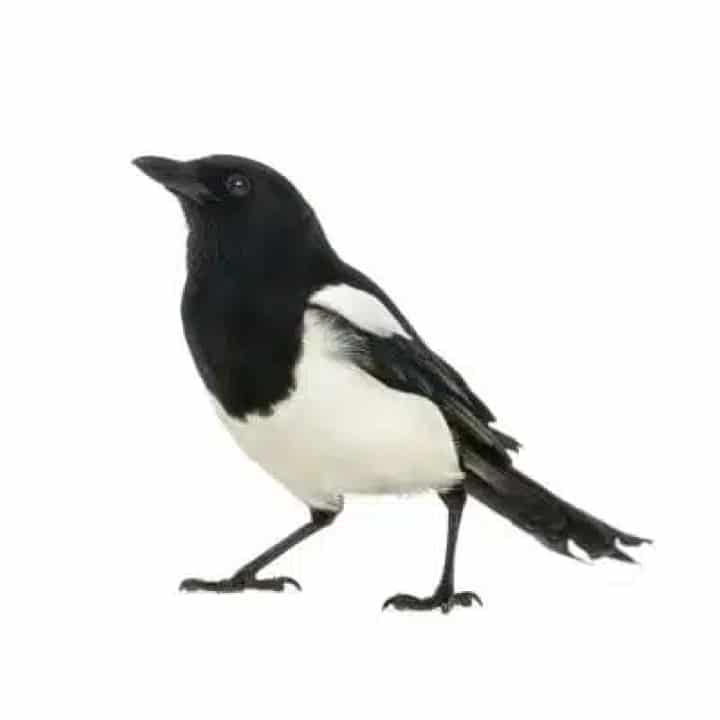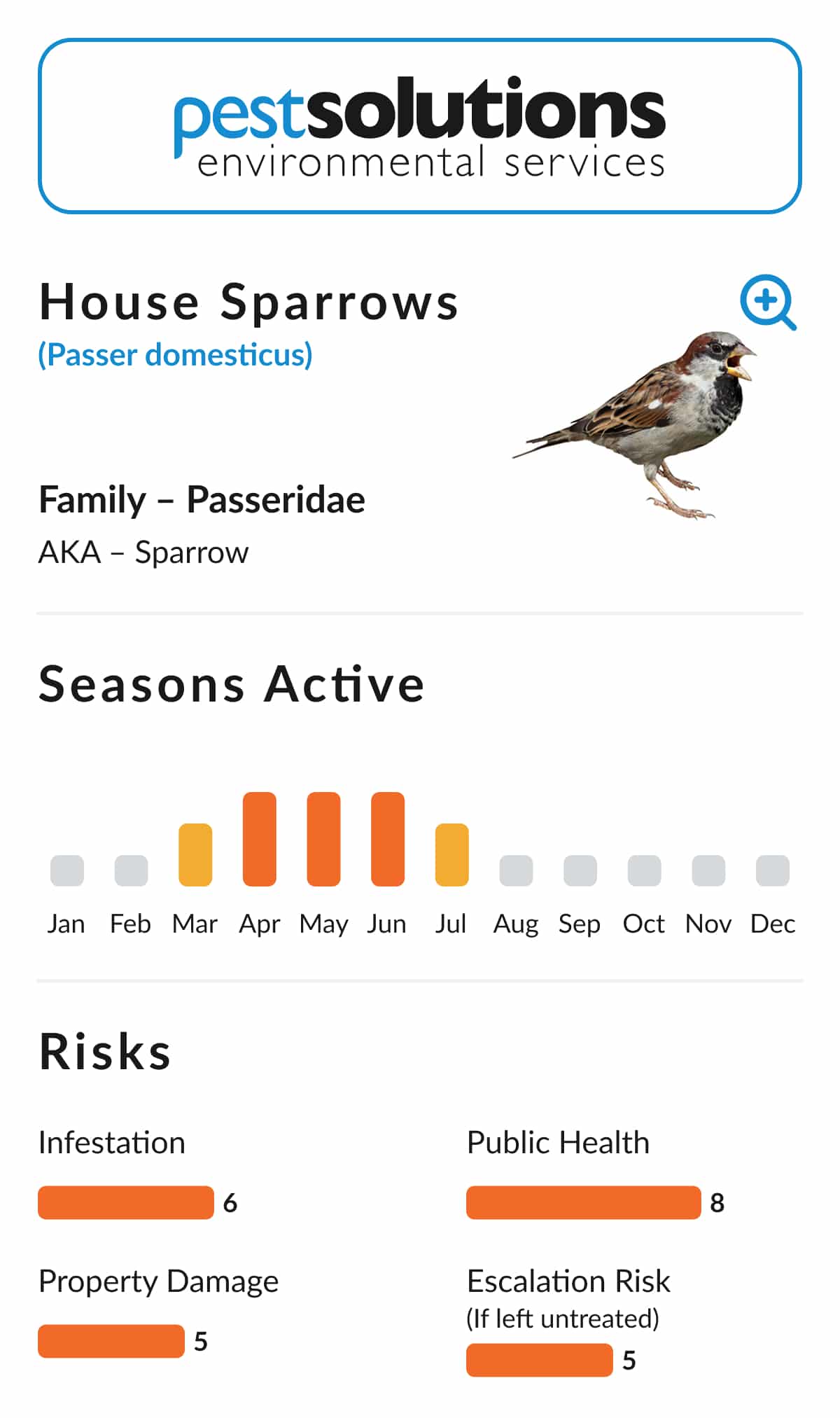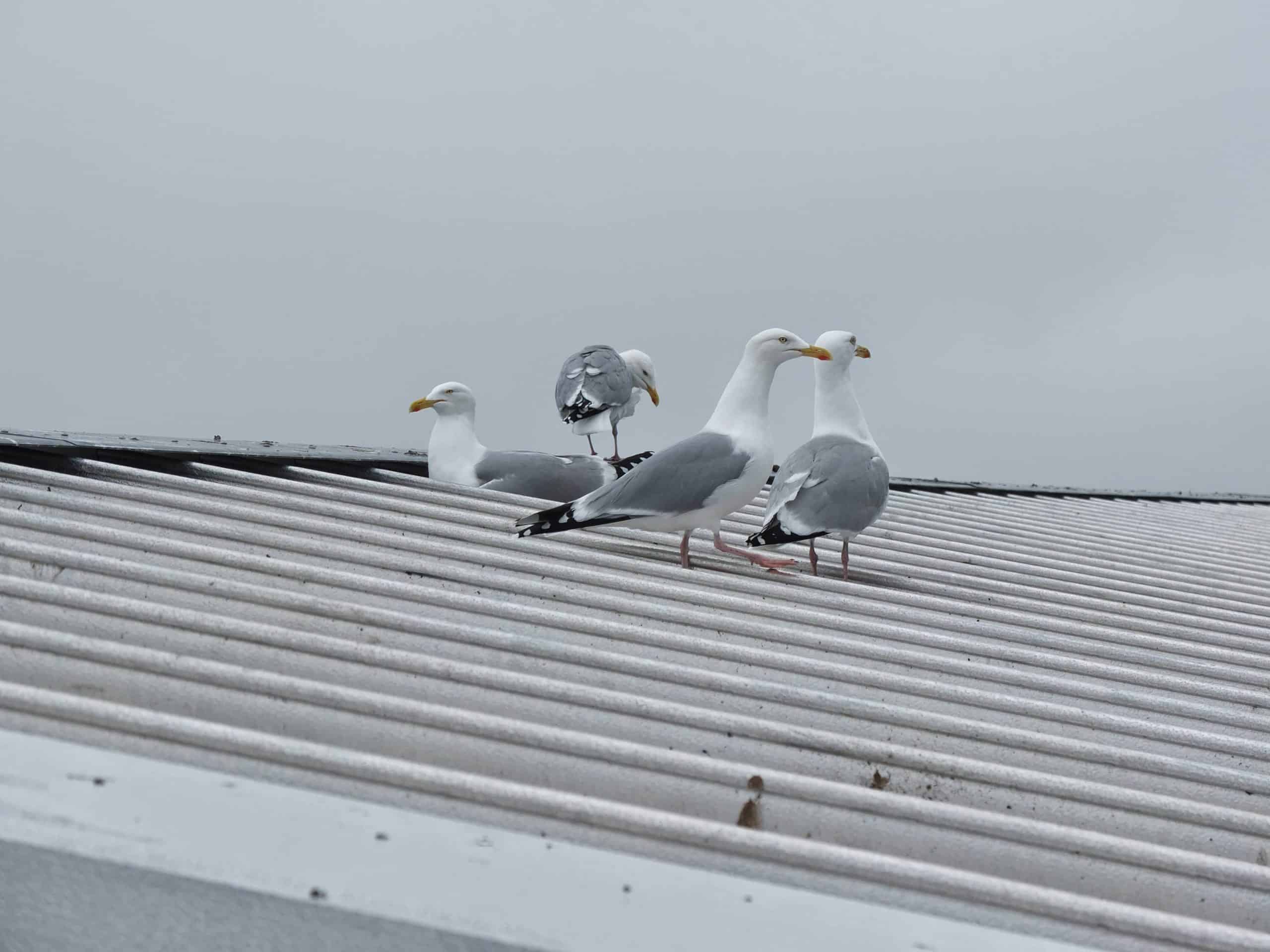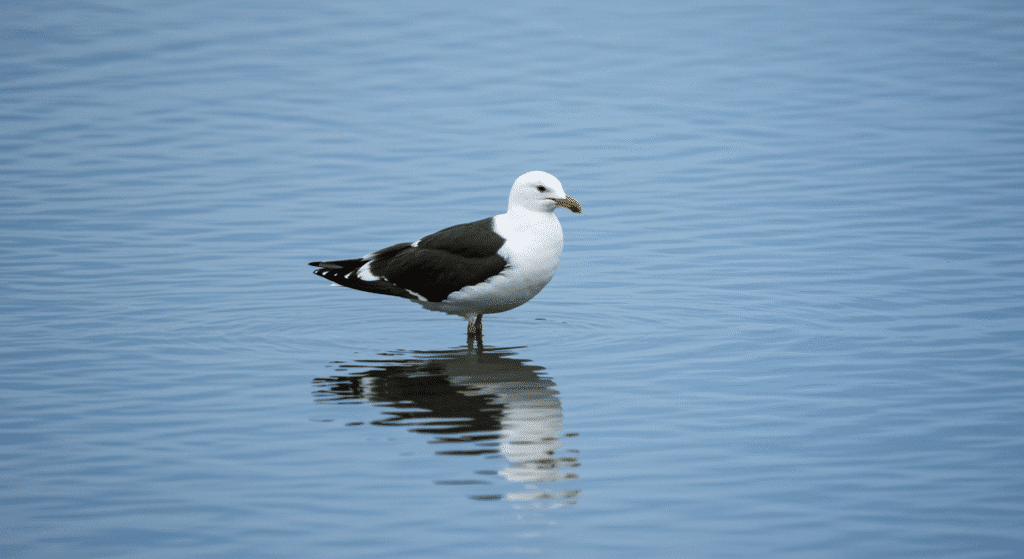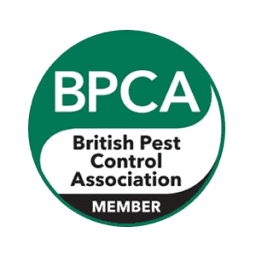The Key Facts About Gulls (Seagulls)
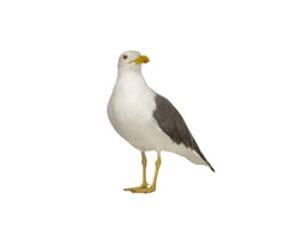
Gull species (Laridae) can live for up to 25 years, reaching sexual maturity 5 years after birth. Unlike some other pest bird species, gulls lay relatively few eggs each year. The nesting season for gulls begins around April or May, and the gulls will only lay a single clutch of eggs assuming that these are not stolen by predators. In a typical gull clutch there will be between 2 and 3 chicks. The young remain near the nest for 5-6 weeks meaning that the breeding season often extends to August.
Gull Species (Laridae) Significance of Control
Gull Species (Laridae) used to be associated with coastal areas but are now found commonly in many inland towns and cities. They will readily nest on roofs of private houses, hotels, office buildings, warehouses and large factories.
They will fly long distances for food, which they often find at landfill sites, sewage outlets or agricultural land. Other food sources include scavenging from urban areas and commercial food waste.
When gulls are incubating eggs, they will generally be fairly docile. However, once the chicks have hatched, this behaviour changes dramatically. Their maternal instincts kick in, and they will act extremely aggressively towards anything that they view as a threat. Unfortunately, gulls have poor depth perception, so they may well see people a few storeys below as being right next to their nests- and thus act to protect their chicks from this apparent danger. This can lead to a direct public health risk, especially during breeding season. Scheduled nest removals during the breeding season can reduce or eliminate this aggression and provide a more humane method of control as no live birds need to be culled. Structured nest removals planned over successive seasons can help to move Gulls from buildings that they have colonised for years.
Proofing measures, environmental habitat control and strict waste management procedures are also effective methods of controlling this Pest Bird species.
Call Pest Solutions to Get Rid of That Pest Today!
Pest Solutions have regional Branches across Scotland, England, Wales and Northern Ireland. Our professional local specialists are at hand to attend today. Gull Species (Laridae). Call Up Pest Solutions now to have your neighbourhood Pest Solutions specialist call at your home or office and take care of your Pest related Challenge. Reclaim your office or home today.
Get in touch with Pest Solutions on 0800 027 2555 today to get a FREE survey or to have a member of our service team solve your pest problem. Alternatively click here to find the details of your local Pest Solutions branch.
